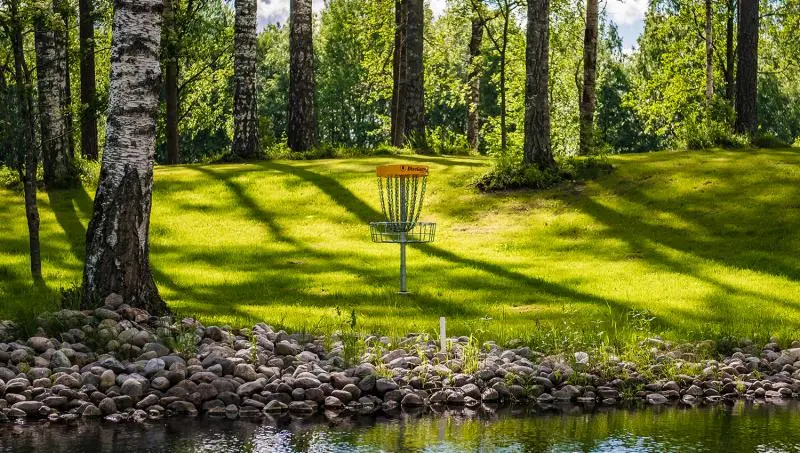Disc Golf Courses allure has attracted both elite athletes and ecotourists, contributing to the sport’s meteoric rise in popularity in recent years. The settings in which the game takes place are just as important as the game itself in creating an exciting and engaging experience. Players may put their talents to the test and get in touch with nature on disc golf courses, which have beautiful landscapes and varied layouts. Come with me as I take you on a tour of the fascinating world of disc golf.
Disc Golf Course Development

Disc golf was born in the 1960s when golf fans started modifying the game by substituting flying discs for standard clubs and balls. At first, gamers would make their courses out of random objects found in parks, such as trees and lampposts. As interest in the sport grew, courses tailored to disc golf emerged, offering a mix of difficulty and accessibility for players.
Disc golf courses nowadays can be found in a wide range of sizes and styles, from small urban layouts to expansive wilderness courses. Every course is different, with its own set of challenges and chances, so players have to adjust their game based on the landscape.
Discovering the Wonders of Nature
The fact that disc golf can help players become more connected with nature is one of the sport’s most appealing features. Disc golf courses meander through woodlands, meadows, and rocky terrain, in contrast to conventional golf courses that frequently include carefully manicured landscapes.
Envision yourself making your way through a forested fairway, delicately choosing your disc, and planning your next throw as dappled sunshine filters through the canopy overhead. Another option is to imagine yourself on a tee pad gazing down into a beautiful valley, with faraway mountains lining the horizon, and then launching your disc into the wide open space below. These are the times when playing disc golf becomes an opportunity to fully appreciate the tranquility and beauty of nature, rather than only a game.
Crafting the Ideal Curriculum
A unique disc golf course is the result of a careful balancing act between artistic and scientific considerations. In order to create a course that is both difficult and fun to play, designers must take into account elements like topography, vegetation, and changes in elevation. Designers can take players on a tour across the countryside, highlighting its natural elements and testing their talents and decision-making abilities, by carefully positioning baskets and tees.
In order to test players’ throwing skills, a well-designed course will have holes of varying lengths and forms. Every hole on the course has its own unique combination of difficulties and opportunities, from narrow, complex fairways that necessitate accuracy and precision to expansive, bomber holes that reward length and force.
Preserving Balance in the Natural World
Everyone involved in the disc golf industry, from players to course designers, must do their part to keep the environment as healthy as possible. Utilizing native vegetation and avoiding tree clearance are examples of sustainable course design methods that contribute to preserving the landscape’s natural beauty while also ensuring that future generations can enjoy playing on the course.
Additionally, disc golf courses can only be maintained and thrive in the long run with the help of diligent stewardship and community involvement. The courses are kept in excellent shape through volunteer workdays, fundraising events, and regular maintenance initiatives. This helps to cultivate a sense of ownership and pride among both players and local communities.
Long-Term Prospects
The need for top-notch disc golf courses is growing in response to the sport’s meteoric surge in popularity across the world. The disc golf course landscape is being developed and improved by a wide range of groups and individuals, from amateurs to established design companies.
New approaches to course design, like drone mapping and augmented reality, have the potential to revolutionize the way we play by fusing the virtual and real worlds. Furthering the sport’s dedication to environmental responsibility, agreements with land trusts and conservation organizations present intriguing potential to build new courses in ecologically sensitive places.
Disc golf courses are lively ecosystems where nature and sport combine in harmony; they are more than just places to play. Whether it’s the peacefulness of forested fairways or the untamed beauty of mountain courses, every course provides a different experience for golfers.
landscapes that characterize the sport will change and adapt in tandem with its development and expansion. Disc golfers have a responsibility to embrace sustainable methods and cultivate a strong connection to the natural world so that disc golf courses can continue to be enjoyed by generations to come. Get out there, grab a few discs, and see what all the fuss is about disc golf courses.
Leave a Comment